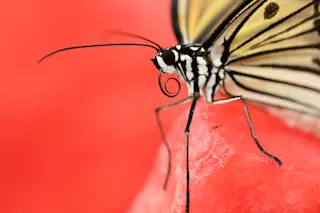A reconstruction of Carnotaurus, who clearly knew a thing or two about fashion. (Credit: Lida Xing and Yi Liu/Wikimedia Commons) The fancier the crown, the bigger the dinosaur, a new study suggests. Researchers from North Carolina State University conducted a statistical analysis of theropod fossils from 111 species, comparing those with head ornamentation to those without. They found a sharp divide between the two groups when it came to size, and their results indicate that theropods with impressive crowns grew into giants 20 times faster than those with unadorned heads. In other words, head bling may have been a driving force shaping their evolution.
Twenty of the 22 theropod species above 2,200 pounds possessed some kind of ornamentation on their noggins, from the spiky horns wielded by Carnotaurus to the impressive ridges atop Dilophosaurus. But there's no clear consensus on what advantage funky-looking headwear conferred for dinosaurs. They may have ...














